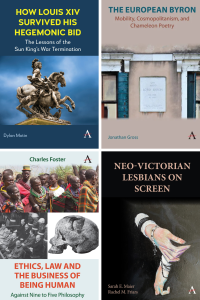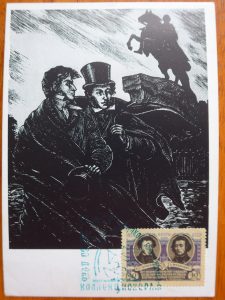The paradox of Thom Browne: how one designer redefined the suit for the 21st century
This is a guest post by Benjamin Wild, author of Thom Browne
In just over twenty years, Thom Browne has achieved something remarkable: he has made the grey suit revolutionary. The American designer’s distinctive uniform – cropped sleeves ending four inches above the wrist, trousers hemmed high above the ankle and those signature four white stripes – has become one of fashion’s most recognisable looks. But behind this seemingly simple aesthetic lies a complex world of contradictions that reveals much about contemporary fashion, American identity and the nature of creative authority.
Browne’s ascent has been nothing short of meteoric. From selling five suits on an appointment-only basis from Manhattan’s Meat-Packing District in 2001, he now operates 107 stores across forty countries and produces at least eight collections annually. This expansion occurred during some of the most challenging decades in recent memory, including the 2008 financial crisis, the COVID-19 pandemic and significant political upheaval. The fact that a brand built around such a specific, almost pedantic vision not only survived but thrived speaks to something deeper than mere commercial success.
What makes Browne particularly fascinating as a subject of scholarly analysis is his complete lack of formal design training. Unable to illustrate ‘at all’, he begins collections using plastic shape templates – a triangle for a pleated skirt, a rectangle for outerwear. This autodidactic approach, combined with his deeply personal connection to his brand, creates what might be called a fashion auteur: a designer whose work reflects a singular, uncompromising vision that permeates every aspect of their creative output.
My book – the first to analyse Thom Browne’s contribution to fashion – reveals that Browne’s ‘world’ is fundamentally American, rooted in the preppie aesthetic he encountered during his years at the University of Notre Dame. His designs can be understood through what philosopher Georges Didi-Huberman termed ‘anachronistic comparison’ – a collision between past and present that challenges accepted assumptions. Browne takes the familiar symbols of American privilege – the Ivy League blazer, Oxford shirt and tailored trouser – and distorts them through his personal lens, creating something simultaneously nostalgic and futuristic.
Perhaps most intriguingly, the book examines the theatrical presentations through which Browne’s designs are revealed. His runway shows are elaborate performances that can last over thirty minutes, featuring complex narratives drawn from sources as diverse as the Old Testament, The Little Prince and Elizabethan court culture. A 2009 presentation at Pitti Uomo, analysed as a kind of manifesto, featured forty identical male models typing in unison in a scene reminiscent of Mad Men. These shows often alienate and confuse audiences, yet they serve a crucial function in establishing the designer’s authority and vision.
My analysis also uncovers the commercial paradoxes that define Browne’s brand. While his runway footwear features elaborate platform shoes that make walking treacherous, his commercial footwear remains conservatively practical. Meanwhile, his whimsical bags – including the now-famous Hector bag modelled after his dachshund – successfully bridge the gap between catwalk fantasy and sidewalk reality, commanding prices between £1,350 and £4,440.
What emerges from my study is a portrait of a designer who has created not just clothing, but a complete worldview. Browne’s insistence on proportion, discipline and rigorous attention to detail reflects deeper American values while questioning them. His world is elitist and exclusive – requiring ‘superhuman’ bodies and unwavering commitment to his aesthetic vision – yet it offers its adherents, known as ‘Browneans’, a form of liberation through constraint.
As Browne assumes greater influence in his role as Chairman of the Council of Fashion Designers of America, his impact extends beyond individual creativity to shape broader conversations about American fashion’s place in the global industry. His 2023 haute couture debut in Paris, featuring 2,002 cardboard cutouts in the audience, demonstrated his ability to challenge even the most established fashion traditions with his distinctively American sensibility.
My book ultimately argues that understanding Thom Browne requires accepting him on his own terms – a challenging proposition that mirrors the experience of engaging with his designs themselves. In an age of fast fashion and algorithmic aesthetics, Browne’s unwavering commitment to his singular vision offers both inspiration and provocation, suggesting that true creative authority requires not just talent but also the courage to demand that the world see things differently.
Latest Posts

Ada, meet Ada: bridging the two cultures
This is a guest post by Mark Seligman, author of AI and Ada: Artificial Translation and Creation of Literature Artificial intelligence has suddenly become real – or has it? To...

The Amendments to the Constitution, a pathway to the American experience
This is an interview with Blaine Kaltman, author of Perfecting the U.S. Constitution: 27 and Counting, The Amendments that Shaped America’s Future Q. What made you decide to write a...

Featured releases: September 2025
September marks the gentle shift from summer’s warmth to autumn’s calm, a month of balance and reflection. We are celebrating this month with an exciting line-up of new releases. From...

Byron’s engagement with Eastern European writers: Mickiewicz and Pushkin
This is a guest post by Jonathan Gross, author of The European Byron Mobility, Cosmopolitanism, and Chameleon Although there have been many studies of Byron’s European impact, I consider the...

